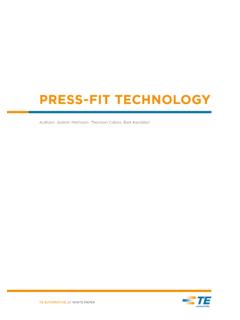Transcription of WHITEPAPER A SMART APPROACH TO …
1 WHITEPAPER . A SMART APPROACH TO. WAREHOUSE AUTOMATION. WHITEPAPER A SMART APPROACH TO WAREHOUSE AUTOMATION 2. ABOUT. Are your looking to automate your warehouse operation? In this white paper we will identify some key success factors to best leverage your combination of Warehouse Management System (WMS) and Material Handling Equipment (MHE). Due to the large risk and investment involved in a full-blown automation project, it is often better to automate selectively using a phased APPROACH , and focus on the parts that are underperforming. WHITEPAPER A SMART APPROACH TO WAREHOUSE AUTOMATION 3. AUTOMATION VS FLEXIBILITY. Let's start with the contradicting terms of automation and flexibility. As a warehouse management professional you would often equal automation with a complex MHE system including conveyors, sorters, high-bay storage cranes etc.
2 Most of us looking for such solutions think of it as a black box, a closed system supplied by an automation vendor to meet strictly defined input/output requirements. A ONE SYSTEM APPROACH for automation works fine when you operate in a stable environment. That means not too much change in product assortment, order patterns or distribution channels. Or when you can afford the luxury of significantly over-dimensioning your system and facility. Under such conditions you can go ahead and create a business case based on the key factors of volumes (peak and average), utilisation (the system must at least be in use x hours on average), and labour cost level. So if you think your operation will stay as is, change marginally, or you enjoy the luxury of infinite capacity, you can stop reading here. But what if you need to deal with change?
3 Well, yes, who doesn't? The last couple of years have clearly put our ability to change and adapt into focus. It is therefore wise to adopt this broader definition: Automation is any measure you implement to make your operation perform smarter and produce more with less people. It means getting access to and making use of the right information to eliminate unnecessary and/or manual process steps. Adding MHE systems is one option, but there are certainly others. The key consideration is how FLEXIBLE you want to be in coping with changing conditions. It requires a design where automation can be included to improve specific tasks or sub-processes, allowing you to expand and automate entire parts of the operation. WHITEPAPER A SMART APPROACH TO WAREHOUSE AUTOMATION 4. LOOK AT THE ENTIRE PROCESS. Forward looking warehouse operations design their production solutions to support changing patterns in demand and market focus.
4 A. couple of our clients have recently shifted to a model where movements and picking are supported by different automation technologies, but where the overall supply chain strategy and coordination emphasise the ability to quickly shift which product goes via which warehouse channel. One key principle is that you should NOT build your operational processes around your automated MHE systems, but instead take a PROCESS APPROACH and look at the automated processes as a way to address certain parts of the operation. It is dangerous to have a portion of the solution mandating/limiting the overall solution. In a warehouse context we need the support of a warehouse management system that can tie in larger and smaller MHE components when needed, and to coordinate that with mobile scanners and voice users and even manual processing.
5 And maybe most importantly make them interchangeable! The characteristics of the WMS has a key impact for the process APPROACH . A proper WMS, designed for high productivity, automates the operation by creating tasks which are automatically pushed to workers and automation sub-systems whenever there is something to do. It minimises idle time and gives the worker a clear picture of what to do, which calls for fewer manual operations and reduced worker expertise. A best-of-breed WMS drives the operation and gives supervisors and managers a real time overview of labour and capacity across manual and automated processes. This means we achieve higher flexibility at a given automation level: Pro ce ss Ap pr PROCESS FLEXIBILITY. oa ch One Syste m Ap proa ch AUTOMATION LEVEL. WHITEPAPER A SMART APPROACH TO WAREHOUSE AUTOMATION 5.
6 DIFFERENT PROBLEMS REQUIRE DIFFERENT SOLUTIONS. Products will naturally fall into a couple of typical categories, with regards to how they benefit from automation: Products picked in smaller quantities and with relatively low pick frequency that go into high-bay storage via pallet cranes or mini-load systems. Picking from goods-to-man pick stations instead of traveling long distances makes a great investment case. Nicely shaped products picked in small quantities but with high frequency will naturally go into picking machines. The sheer speed of the equipment can increase throughput and reduce labour needs many times over. Bulkier products and products picked in larger quantities typically use semi-automated solutions like voice interaction, scanners etc, but in combination with internal transport (conveyors, auto-guided vehicles).
7 Some manual control and handling allows for greater flexibility. If we need to do merge-in-transit down the chain, any of these are candidates for being cross-docked and sorted by destination without put-away and picking. If we apply this on grocery distribution it might look like this: Regional DC: Medium SKU range, large orders Automating inbound logistics for fast movers Central Warehouse: Tobacco - very low SKU range Automating the picking process Central Warehouse: Dry goods - high SKU range, small orders Automating internal transport We need to categorise the automation solution based on which scenario we want to automate. This means we apply a best-of-breed APPROACH also when selecting the WCS (Warehouse Control System) and MHE solution. WHITEPAPER A SMART APPROACH TO WAREHOUSE AUTOMATION 6. ENABLING CHANGE.
8 Successful automation projects take a very holistic APPROACH to allow for categorisation as discussed above, as well as to provide the flexibility needed for an ever-changing supply chain operation. A site might start as an entirely manual operation, upgrade to include mobile solutions and scanners, extend with voice interactions, and then gradually adopt MHE systems based on product category and/or turnover profiles. This can only happen if you combine these into a solution that allows implementation and change in a phased APPROACH by site, area or zone with no (or little) change to the software. It requires WMS support for flexible definition of warehouse profiles like layout, picking strategies, and the equipment used. It also requires standard interfaces to one or more Warehouse Control Systems (WCS) so that MHE like mini-loads, conveyors, sorters and robots can be staged to perform optimally and be seamlessly incorporated into the operation: TYPICAL COMPONENT-BASED SYSTEMS ARCHITECTURE FOR.
9 ORDER FULFILLMENT OPERATIONS. Enterprise Plan Wide Decisions Facility Level Inventory Tracking & Movement Execute Facility Level Equipment Traffic Management & Move Execution Monitor, Control & Drive Movements of a Single Piece of Equipment Control Sensors, Switches, Motors etc. WHITEPAPER A SMART APPROACH TO WAREHOUSE AUTOMATION 7. THE WAREHOUSE CONDUCTOR. If you want to get the most out of your pool of forklift truck drivers, pickers AND material handling equipment, a proper WMS is essential to help you prioritise and balance resources. Look at the WMS as the conductor of the orchestra. The conductor keeps everything in sync and can adapt the pace and intensity to the dynamics of performing teams, individuals and instruments. But the more automation (sequencers, pre-programmed loops etc) you add, the more the conductor gets tied to a pre-defined and flat performance.
10 When you have automated the entire set, you won't need the conductor, right? Well, it could be true provided you don't need to deal with dynamics or change. The reality is maybe more that you spend your nights twisting and turning worrying about how your operation is doing to keep up with variances and new patterns, and wind up sleepless thinking of it as an endless game where you struggle to be organised enough to defeat the opposing and irrational side (here: the erratic customers with their volatile demand). One of the most challenging parts of increasing automation is the planning and coordination of the various timeframes on the outbound side. It is easy to end up in a situation where the outbound areas become over-crowded if the conductor (WMS) is unable to synchronise and coordinate the speed of the automated and manual processes.






